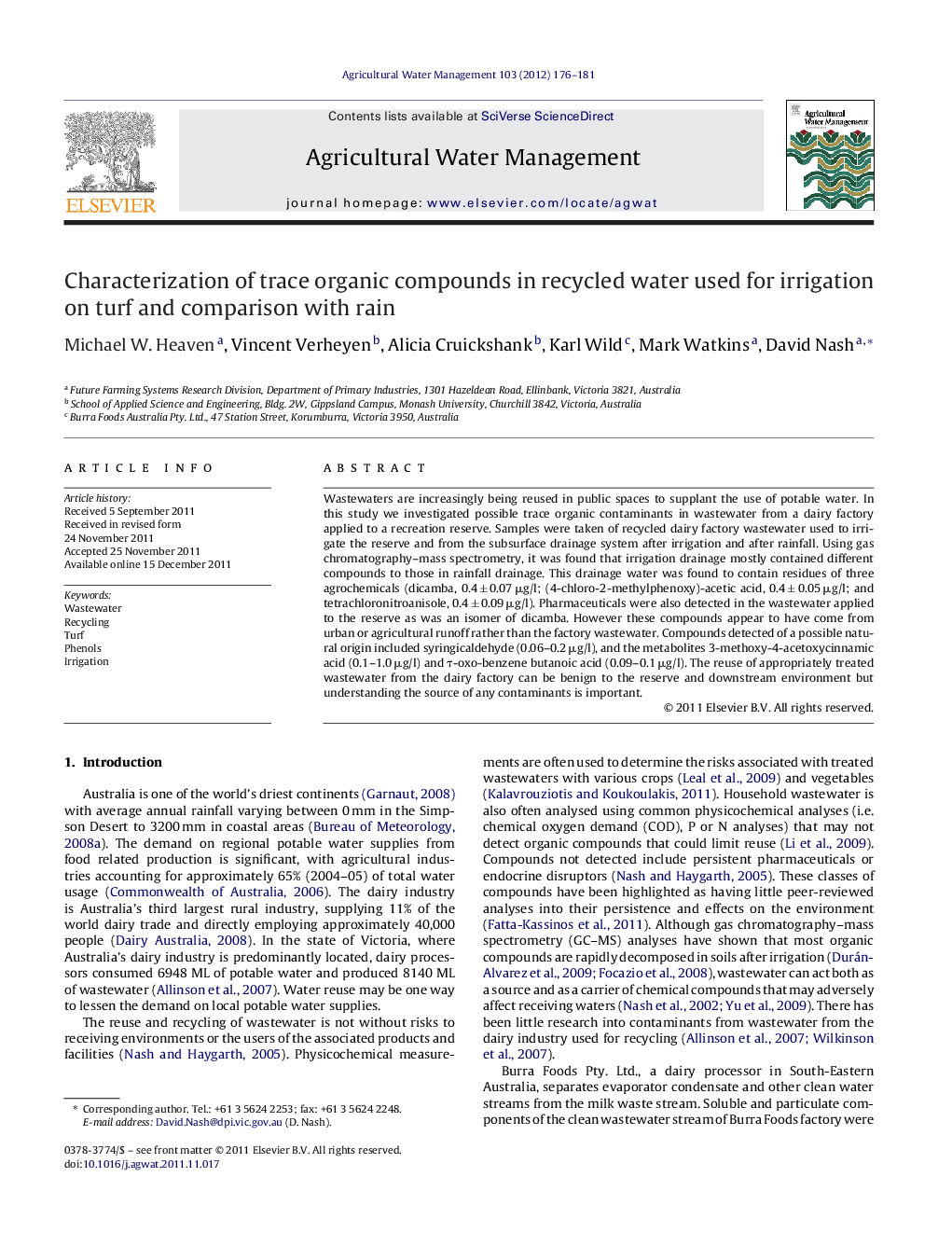| Article ID | Journal | Published Year | Pages | File Type |
|---|---|---|---|---|
| 4479230 | Agricultural Water Management | 2012 | 6 Pages |
Wastewaters are increasingly being reused in public spaces to supplant the use of potable water. In this study we investigated possible trace organic contaminants in wastewater from a dairy factory applied to a recreation reserve. Samples were taken of recycled dairy factory wastewater used to irrigate the reserve and from the subsurface drainage system after irrigation and after rainfall. Using gas chromatography–mass spectrometry, it was found that irrigation drainage mostly contained different compounds to those in rainfall drainage. This drainage water was found to contain residues of three agrochemicals (dicamba, 0.4 ± 0.07 μg/l; (4-chloro-2-methylphenoxy)-acetic acid, 0.4 ± 0.05 μg/l; and tetrachloronitroanisole, 0.4 ± 0.09 μg/l). Pharmaceuticals were also detected in the wastewater applied to the reserve as was an isomer of dicamba. However these compounds appear to have come from urban or agricultural runoff rather than the factory wastewater. Compounds detected of a possible natural origin included syringicaldehyde (0.06–0.2 μg/l), and the metabolites 3-methoxy-4-acetoxycinnamic acid (0.1–1.0 μg/l) and τ-oxo-benzene butanoic acid (0.09–0.1 μg/l). The reuse of appropriately treated wastewater from the dairy factory can be benign to the reserve and downstream environment but understanding the source of any contaminants is important.
► Dairy factory wastewater was used to irrigate a recreation reserve. ► Irrigation water was found to contain agrochemicals and pharmaceuticals. ► Contaminant concentrations were found to be lower than the LD50 and LC50. ► There were few common compounds when comparing rainfall with irrigation. ► The wastewater seems suitable for reuse under current limited regulations.
